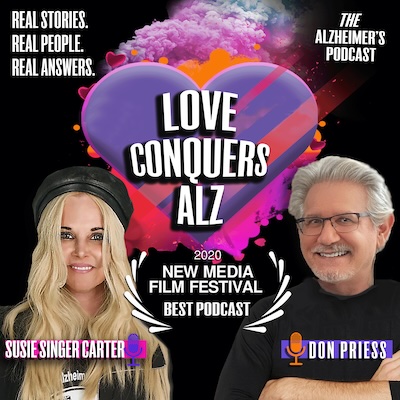Merger Signs of Impending Disaster
Seventy percent of mergersu00a0fail* to create value that is greater than the sum of the parts.
n
So how do you know if your merger is failing while there is still time to do something about it?
n
Watch for these signs:
n
The Goat Rodeo: A lack of executive alignment
n

n
Instead of
n

n
Months after the close the executive team is still arguing about whether the merger or acquisition is a good idea.
n
- n
- People keep saying, u201cTell me again, what was the purpose of the merger?u201d
- Everybody has a different thought about:n
- n
- What pieces of the business to rationalize
- Who the core customers are
- What the product categories of the future are
- How to go to market
n
n
n
n
n
- Executive staff meetings take forever!
n
n
n
n
Navel-gazing overdose
n
- n
- Internal focus leads to a lack of attention to customers and suppliers:
- Nobody has been to see a customer in months.
- Key suppliers, the ones you thought were your u201cpartners,u201d are missing deliveries or slipping in quality or complaining about being u201csqueezed dry by the accountants.u201d
n
n
n
n
Arterial bleeding: a talent exodus
n
Turnover is always an important measure that things have gone awry.u00a0 Look deeper.u00a0 Are you losing:
n
- n
- Key executives or managers (the ones on the u201cmust keepu201d lists)?
- R&D scientists or technicians?
- Long-term manufacturing process knowledge (Old Joe from Quality Testing who knows the releasers at your biggest customers)?
- Information systems people?
n
n
n
n
n
u201cFiddle te de, Iu2019ll think about that tomorrowu201d
n
Rosy view accounting or forecasting is indicated by:
n
- n
- Lack of cash management focus; failure to meet cost-savings deadlines
- Failure to redeploy or lay off people in agreed duplicate roles
- Falling sales, which will u201cturn around next quarteru201d
n
n
n
n
(Note:u00a0 Someone will no doubt say, u201cSales always go down the first year of a merger.u201d But then remember, most mergers fail, donu2019t they?)
n
Goliath coming over the hill: A change in the competitive landscape
n
Mergers are an aggressive competitive act.u00a0 Competitors will respond.u00a0 Watch for:
n
- n
- Mergers that beget other mergers, joint ventures, and alliances. Horizontal integration that begets competitive vertical integration and vice versa.
- Competitors that respond by cutting prices, locking up supplies, flooding distribution with product, or in some way nobody has even thought of yet.
- Competitors are suddenly attacking your traditional strongholds and gaining ground.
n
n
n
n
Competitive response raises the bar for the merger or acquisition.u00a0 What started out as adding a product or increasing capacity becomes a life or death struggle.u00a0 If nothing else, it speeds up the optimum integration timeframe.u00a0 What could comfortably be done over eighteen months now has nine months before the board starts discussing divestitures.
n
Spaghetti code and GIGO: information systems breakdown
n
Information systems touch every aspect of the business. IT and the degree to which the two companiesu2019 systems are combined are critical success factors.u00a0 During mergers, people make changes without considering implications for IT.u00a0 Programmers make integration-expedient choices without considering the business needs of users. u00a0Sometimes that takes the form of patching two systems together in very arcane and complex ways (spaghetti code). Other timesu00a0 that takes the form of poorly defined or monitored input data that produces inaccurate or uninterpretable output reports (garbage-in-garbage-out, or GIGO).
n
Symptoms include:
n
- n
- You canu2019t get data at all or on time or the way you need it or the way you used to get it, and u201cnothing can be done about it.u201d
- The system u201ccrashesu201d again.
- u201cThe person who wrote that code left last month.u201d
- The IT people ask for overtime, and you give it to them, doubling your IT salary costs.
n
n
n
n
n
Best practice Armageddon
n
Cultural warfare is about whose way of doing things is better.u00a0 Some of this will go on no matter what you do.u00a0 Some people will fight on for years.u00a0 But if most of your organization is paralyzed, if most people are internally focused on the past (as opposed to externally on the future), then there is a crisis.u00a0 Symptoms include:
n
- n
- A lack of experimentation
- A lack of Innovation
- A plethora of war stories and anecdotes about the u201creason we do it this wayu201d
- u201cStonewallingu201d implementation of decisions you thought were made months ago
- Lots of we/they, us/them, and u201cyou donu2019t understandu201d
- More discussion about u201cwhose fault it isu201d than there is about how to solve the problem
n
n
n
n
n
n
n
Low-grade fever and general malaise
n
People are just u201cworn outu201d with the Stress of integration.u00a0 Change is tough.u00a0 Change in a merger is tougher.u00a0 Sometimes it gets so bad that everything grinds to a halt.u00a0 Most people arenu2019t having fun anymore.u00a0 Symptoms include:
n
- n
- Organization climate survey scores are declining, u201cWeu2019re moving too quickly!u201d
- Others say, u201cWeu2019re not moving quickly enough!u201d
- Absenteeism and tardiness increase.
- Employees are taking vacations at critical delivery times.
- There is a lack of attendance at company social events.
- A greater than usual number of people are swearing uncontrollably.
n
n
n
n
n
n
n
If your merger or acquisition is experiencing one or more of these symptoms, it may be time for a restart.u00a0 If it is experiencing three or more, it is time for a turnaround.
n
Key steps of a restart:
n
- n
- Align executives first:
n
n
- n
- Agree on purpose of the merger, and the vision and strategy.
- Agree on the values of the new organization.
n
n
n
- n
- Plan a new integration that:
n
n
- n
- Utilizes a joint-team (from both firms) participative approach
- Creates a cadre of change agents from both companies
n
n
n
- n
- Make IT a critical-path stream.
- Mobilize the entire organization to make the change, impassioned by a new sense of urgency.
n
n
n
u00a0
n
* Source: u201dThe Big Idea: The New M&A Playbooku201d Clayton Christensen, Richard Alton, Curtis Rising, Andrew Waldek; Harvard Business Review, March 2011, Updated and revalidated March 2021
“,”tablet”:”
Seventy percent of mergers fail* to create value that is greater than the sum of the parts.
n
So how do you know if your merger is failing while there is still time to do something about it?
n
Watch for these signs:
n
The Goat Rodeo: A lack of executive alignment
n

n
Instead of
n

n
Months after the close the executive team is still arguing about whether the merger or acquisition is a good idea.
n
- n
- People keep saying, u201cTell me again, what was the purpose of the merger?u201d
- Everybody has a different thought about:n
- n
- What pieces of the business to rationalize
- Who the core customers are
- What the product categories of the future are
- How to go to market
n
n
n
n
n
- Executive staff meetings take forever!
n
n
n
n
Navel-gazing overdose
n
- n
- Internal focus leads to a lack of attention to customers and suppliers:
- Nobody has been to see a customer in months.
- Key suppliers, the ones you thought were your u201cpartners,u201d are missing deliveries or slipping in quality or complaining about being u201csqueezed dry by the accountants.u201d
n
n
n
n
Arterial bleeding: a talent exodus
n
Turnover is always an important measure that things have gone awry. Look deeper. Are you losing:
n
- n
- Key executives or managers (the ones on the u201cmust keepu201d lists)?
- R&D scientists or technicians?
- Long-term manufacturing process knowledge (Old Joe from Quality Testing who knows the releasers at your biggest customers)?
- Information systems people?
n
n
n
n
n
u201cFiddle te de, Iu2019ll think about that tomorrowu201d
n
Rosy view accounting or forecasting is indicated by:
n
- n
- Lack of cash management focus; failure to meet cost-savings deadlines
- Failure to redeploy or lay off people in agreed duplicate roles
- Falling sales, which will u201cturn around next quarteru201d
n
n
n
n
(Note: Someone will no doubt say, u201cSales always go down the first year of a merger.u201d But then remember, most mergers fail, donu2019t they?)
n
Goliath coming over the hill: A change in the competitive landscape
n
Mergers are an aggressive competitive act. Competitors will respond. Watch for:
n
- n
- Mergers that beget other mergers, joint ventures, and alliances. Horizontal integration that begets competitive vertical integration and vice versa.
- Competitors that respond by cutting prices, locking up supplies, flooding distribution with product, or in some way nobody has even thought of yet.
- Competitors are suddenly attacking your traditional strongholds and gaining ground.
n
n
n
n
Competitive response raises the bar for the merger or acquisition. What started out as adding a product or increasing capacity becomes a life or death struggle. If nothing else, it speeds up the optimum integration timeframe. What could comfortably be done over eighteen months now has nine months before the board starts discussing divestitures.
n
Spaghetti code and GIGO: information systems breakdown
n
Information systems touch every aspect of the business. IT and the degree to which the two companiesu2019 systems are combined are critical success factors. During mergers, people make changes without considering implications for IT. Programmers make integration-expedient choices without considering the business needs of users. Sometimes that takes the form of patching two systems together in very arcane and complex ways (spaghetti code). Other times that takes the form of poorly defined or monitored input data that produces inaccurate or uninterpretable output reports (garbage-in-garbage-out, or GIGO).
n
Symptoms include:
n
- n
- You canu2019t get data at all or on time or the way you need it or the way you used to get it, and u201cnothing can be done about it.u201d
- The system u201ccrashesu201d again.
- u201cThe person who wrote that code left last month.u201d
- The IT people ask for overtime, and you give it to them, doubling your IT salary costs.
n
n
n
n
n
Best practice Armageddon
n
Cultural warfare is about whose way of doing things is better. Some of this will go on no matter what you do. Some people will fight on for years. But if most of your organization is paralyzed, if most people are internally focused on the past (as opposed to externally on the future), then there is a crisis. Symptoms include:
n
- n
- A lack of experimentation
- A lack of innovation
- A plethora of war stories and anecdotes about the u201creason we do it this wayu201d
- u201cStonewallingu201d implementation of decisions you thought were made months ago
- Lots of we/they, us/them, and u201cyou donu2019t understandu201d
- More discussion about u201cwhose fault it isu201d than there is about how to solve the problem
n
n
n
n
n
n
n
n
Low-grade fever and general malaise
n
People are just u201cworn outu201d with the stress of integration. Change is tough. Change in a merger is tougher. Sometimes it gets so bad that everything grinds to a halt. Most people arenu2019t having fun anymore. Symptoms include:
n
- n
- Organization climate survey scores are declining, u201cWeu2019re moving too quickly!u201d
- Others say, u201cWeu2019re not moving quickly enough!u201d
- Absenteeism and tardiness increase.
- Employees are taking vacations at critical delivery times.
- There is a lack of attendance at company social events.
- A greater than usual number of people are swearing uncontrollably.
n
n
n
n
n
n
n
If your merger or acquisition is experiencing one or more of these symptoms, it may be time for a restart. If it is experiencing three or more, it is time for a turnaround.
n
Key steps of a restart:
n
- n
- Align executives first:
n
n
- n
- Agree on purpose of the merger, and the vision and strategy.
- Agree on the values of the new organization.
n
n
n
- n
- Plan a new integration that:
n
n
- n
- Utilizes a joint-team (from both firms) participative approach
- Creates a cadre of change agents from both companies
n
n
n
- n
- Make IT a critical-path stream.
- Mobilize the entire organization to make the change, impassioned by a new sense of urgency.
n
n
n
n
* Source: u201dThe Big Idea: The New M&A Playbooku201d Clayton Christensen, Richard Alton, Curtis Rising, Andrew Waldek; Harvard Business Review, March 2011, Updated and revalidated March 2021
“,”phone”:”
n
Seventy percent of mergers fail* to create value that is greater than the sum of the parts.
n
So how do you know if your merger is failing while there is still time to do something about it?
n
Watch for these signs:
n
The Goat Rodeo: A lack of executive alignment
n

n
Instead of
n

n
Months after the close the executive team is still arguing about whether the merger or acquisition is a good idea.
n
- n
- People keep saying, u201cTell me again, what was the purpose of the merger?u201d
- Everybody has a different thought about:n
- n
- What pieces of the business to rationalize
- Who the core customers are
- What the product categories of the future are
- How to go to market
n
n
n
n
n
- Executive staff meetings take forever!
n
n
n
n
Navel-gazing overdose
n
n
- n
- Internal focus leads to a lack of attention to customers and suppliers:
- Nobody has been to see a customer in months.
- Key suppliers, the ones you thought were your u201cpartners,u201d are missing deliveries or slipping in quality or complaining about being u201csqueezed dry by the accountants.u201d
n
n
n
n
Arterial bleeding: a talent exodus
n
n
Turnover is always an important measure that things have gone awry. Look deeper. Are you losing:
n
- n
- Key executives or managers (the ones on the u201cmust keepu201d lists)?
- R&D scientists or technicians?
- Long-term manufacturing process knowledge (Old Joe from Quality Testing who knows the releasers at your biggest customers)?
- Information systems people?
n
n
n
n
n
u201cFiddle te de, Iu2019ll think about that tomorrowu201d
n
n
Rosy view accounting or forecasting is indicated by:
n
- n
- Lack of cash management focus; failure to meet cost-savings deadlines
- Failure to redeploy or lay off people in agreed duplicate roles
- Falling sales, which will u201cturn around next quarteru201d
n
n
n
n
(Note: Someone will no doubt say, u201cSales always go down the first year of a merger.u201d But then remember, most mergers fail, donu2019t they?)
n
Goliath coming over the hill: A change in the competitive landscape
n
n
Mergers are an aggressive competitive act. Competitors will respond. Watch for:
n
- n
- Mergers that beget other mergers, joint ventures, and alliances. Horizontal integration that begets competitive vertical integration and vice versa.
- Competitors that respond by cutting prices, locking up supplies, flooding distribution with product, or in some way nobody has even thought of yet.
- Competitors are suddenly attacking your traditional strongholds and gaining ground.
n
n
n
n
Competitive response raises the bar for the merger or acquisition. What started out as adding a product or increasing capacity becomes a life or death struggle. If nothing else, it speeds up the optimum integration timeframe. What could comfortably be done over eighteen months now has nine months before the board starts discussing divestitures.
n
Spaghetti code and GIGO: information systems breakdown
n
n
Information systems touch every aspect of the business. IT and the degree to which the two companiesu2019 systems are combined are critical success factors. During mergers, people make changes without considering implications for IT. Programmers make integration-expedient choices without considering the business needs of users. Sometimes that takes the form of patching two systems together in very arcane and complex ways (spaghetti code). Other times that takes the form of poorly defined or monitored input data that produces inaccurate or uninterpretable output reports (garbage-in-garbage-out, or GIGO).
n
Symptoms include:
n
- n
- You canu2019t get data at all or on time or the way you need it or the way you used to get it, and u201cnothing can be done about it.u201d
- The system u201ccrashesu201d again.
- u201cThe person who wrote that code left last month.u201d
- The IT people ask for overtime, and you give it to them, doubling your IT salary costs.
n
n
n
n
n
Best practice Armageddon
n
n
Cultural warfare is about whose way of doing things is better. Some of this will go on no matter what you do. Some people will fight on for years. But if most of your organization is paralyzed, if most people are internally focused on the past (as opposed to externally on the future), then there is a crisis. Symptoms include:
n
- n
- A lack of experimentation
- A lack of innovation
- A plethora of war stories and anecdotes about the u201creason we do it this wayu201d
- u201cStonewallingu201d implementation of decisions you thought were made months ago
- Lots of we/they, us/them, and u201cyou donu2019t understandu201d
- More discussion about u201cwhose fault it isu201d than there is about how to solve the problem
n
n
n
n
n
n
n
Low-grade fever and general malaise
n
People are just u201cworn outu201d with the stress of integration. Change is tough. Change in a merger is tougher. Sometimes it gets so bad that everything grinds to a halt. Most people arenu2019t having fun anymore. Symptoms include:
n
- n
- Organization climate survey scores are declining, u201cWeu2019re moving too quickly!u201d
- Others say, u201cWeu2019re not moving quickly enough!u201d
- Absenteeism and tardiness increase.
- Employees are taking vacations at critical delivery times.
- There is a lack of attendance at company social events.
- A greater than usual number of people are swearing uncontrollably.
n
n
n
n
n
n
n
If your merger or acquisition is experiencing one or more of these symptoms, it may be time for a restart. If it is experiencing three or more, it is time for a turnaround.
n
Key steps of a restart:
n
n
- n
- Align executives first:
n
n
- n
- Agree on purpose of the merger, and the vision and strategy.
- Agree on the values of the new organization.
n
n
n
- n
- Plan a new integration that:
n
n
- n
- Utilizes a joint-team (from both firms) participative approach
- Creates a cadre of change agents from both companies
n
n
n
- n
- Make IT a critical-path stream.
- Mobilize the entire organization to make the change, impassioned by a new sense of urgency.
n
n
n
n
* Source: u201dThe Big Idea: The New M&A Playbooku201d Clayton Christensen, Richard Alton, Curtis Rising, Andrew Waldek; Harvard Business Review, March 2011, Updated and revalidated March 2021
“}},”slug”:”et_pb_text”}” data-et-multi-view-load-tablet-hidden=”true” data-et-multi-view-load-phone-hidden=”true”>
Seventy percent of mergers fail* to create value that is greater than the sum of the parts.
So how do you know if your merger is failing while there is still time to do something about it?
Watch for these signs:
The Goat Rodeo: A lack of executive alignment

Instead of

Months after the close the executive team is still arguing about whether the merger or acquisition is a good idea.
- People keep saying, “Tell me again, what was the purpose of the merger?”
- Everybody has a different thought about:
- What pieces of the business to rationalize
- Who the core customers are
- What the product categories of the future are
- How to go to market
- Executive staff meetings take forever!
Navel-gazing overdose
- Internal focus leads to a lack of attention to customers and suppliers:
- Nobody has been to see a customer in months.
- Key suppliers, the ones you thought were your “partners,” are missing deliveries or slipping in quality or complaining about being “squeezed dry by the accountants.”
Arterial bleeding: a talent exodus
Turnover is always an important measure that things have gone awry. Look deeper. Are you losing:
- Key executives or managers (the ones on the “must keep” lists)?
- R&D scientists or technicians?
- Long-term manufacturing process knowledge (Old Joe from Quality Testing who knows the releasers at your biggest customers)?
- Information systems people?
“Fiddle te de, I’ll think about that tomorrow”
Rosy view accounting or forecasting is indicated by:
- Lack of cash management focus; failure to meet cost-savings deadlines
- Failure to redeploy or lay off people in agreed duplicate roles
- Falling sales, which will “turn around next quarter”
(Note: Someone will no doubt say, “Sales always go down the first year of a merger.” But then remember, most mergers fail, don’t they?)
Goliath coming over the hill: A change in the competitive landscape
Mergers are an aggressive competitive act. Competitors will respond. Watch for:
- Mergers that beget other mergers, joint ventures, and alliances. Horizontal integration that begets competitive vertical integration and vice versa.
- Competitors that respond by cutting prices, locking up supplies, flooding distribution with product, or in some way nobody has even thought of yet.
- Competitors are suddenly attacking your traditional strongholds and gaining ground.
Competitive response raises the bar for the merger or acquisition. What started out as adding a product or increasing capacity becomes a life or death struggle. If nothing else, it speeds up the optimum integration timeframe. What could comfortably be done over eighteen months now has nine months before the board starts discussing divestitures.
Spaghetti code and GIGO: information systems breakdown
Information systems touch every aspect of the business. IT and the degree to which the two companies’ systems are combined are critical success factors. During mergers, people make changes without considering implications for IT. Programmers make integration-expedient choices without considering the business needs of users. Sometimes that takes the form of patching two systems together in very arcane and complex ways (spaghetti code). Other times that takes the form of poorly defined or monitored input data that produces inaccurate or uninterpretable output reports (garbage-in-garbage-out, or GIGO).
Symptoms include:
- You can’t get data at all or on time or the way you need it or the way you used to get it, and “nothing can be done about it.”
- The system “crashes” again.
- “The person who wrote that code left last month.”
- The IT people ask for overtime, and you give it to them, doubling your IT salary costs.
Best practice Armageddon
Cultural warfare is about whose way of doing things is better. Some of this will go on no matter what you do. Some people will fight on for years. But if most of your organization is paralyzed, if most people are internally focused on the past (as opposed to externally on the future), then there is a crisis. Symptoms include:
- A lack of experimentation
- A lack of innovation
- A plethora of war stories and anecdotes about the “reason we do it this way”
- “Stonewalling” implementation of decisions you thought were made months ago
- Lots of we/they, us/them, and “you don’t understand”
- More discussion about “whose fault it is” than there is about how to solve the problem
Low-grade fever and general malaise
People are just “worn out” with the stress of integration. Change is tough. Change in a merger is tougher. Sometimes it gets so bad that everything grinds to a halt. Most people aren’t having fun anymore. Symptoms include:
- Organization climate survey scores are declining, “We’re moving too quickly!”
- Others say, “We’re not moving quickly enough!”
- Absenteeism and tardiness increase.
- Employees are taking vacations at critical delivery times.
- There is a lack of attendance at company social events.
- A greater than usual number of people are swearing uncontrollably.
If your merger or acquisition is experiencing one or more of these symptoms, it may be time for a restart. If it is experiencing three or more, it is time for a turnaround.
Key steps of a restart:
- Align executives first:
- Agree on purpose of the merger, and the vision and strategy.
- Agree on the values of the new organization.
- Plan a new integration that:
- Utilizes a joint-team (from both firms) participative approach
- Creates a cadre of change agents from both companies
- Make IT a critical-path stream.
- Mobilize the entire organization to make the change, impassioned by a new sense of urgency.
* Source: ”The Big Idea: The New M&A Playbook” Clayton Christensen, Richard Alton, Curtis Rising, Andrew Waldek; Harvard Business Review, March 2011, Updated and revalidated March 2021
The post Merger Signs of Impending Disaster appeared first on Wisdom from Unusual Places.
Originally Published on https://wisdomfromunusualplaces.com/blog/

























